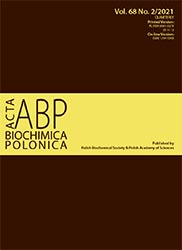Lithium ions display weak interaction with amyloid-beta (Aβ) peptides and have minor effects on their aggregation
Abstract
Alzheimer’s disease (AD) is an incurable disease and the main cause of age-related dementia worldwide, despite decades of research. Treatment of AD with lithium (Li) has showed promising results, but the underlying mechanism is unclear. The pathological hallmark of AD brains is deposition of amyloid plaques, consisting mainly of amyloid-β (Aβ) peptides aggregated into amyloid fibrils. The plaques contain also metal ions of e.g. Cu, Fe, and Zn, and such ions are known to interact with Aβ peptides and modulate their aggregation and toxicity. The interactions between Aβ peptides and Li+ ions have however not been well investigated. Here, we use a range of biophysical techniques to characterize in vitro interactions between Aβ peptides and Li+ ions. We show that Li+ ions display weak and non-specific interactions with Aβ peptides, and have minor effects on Aβ aggregation. These results indicate that possible beneficial effects of Li on AD pathology are not likely caused by direct interactions between Aβ peptides and Li+ ions.
Acta Biochimica Polonica is an OpenAccess quarterly and publishes four issues a year. All contents are distributed under the Creative Commons Attribution-ShareAlike 4.0 International (CC BY 4.0) license. Everybody may use the content following terms: Attribution — You must give appropriate credit, provide a link to the license, and indicate if changes were made. You may do so in any reasonable manner, but not in any way that suggests the licensor endorses you or your use.
Copyright for all published papers © stays with the authors.
Copyright for the journal: © Polish Biochemical Society.


